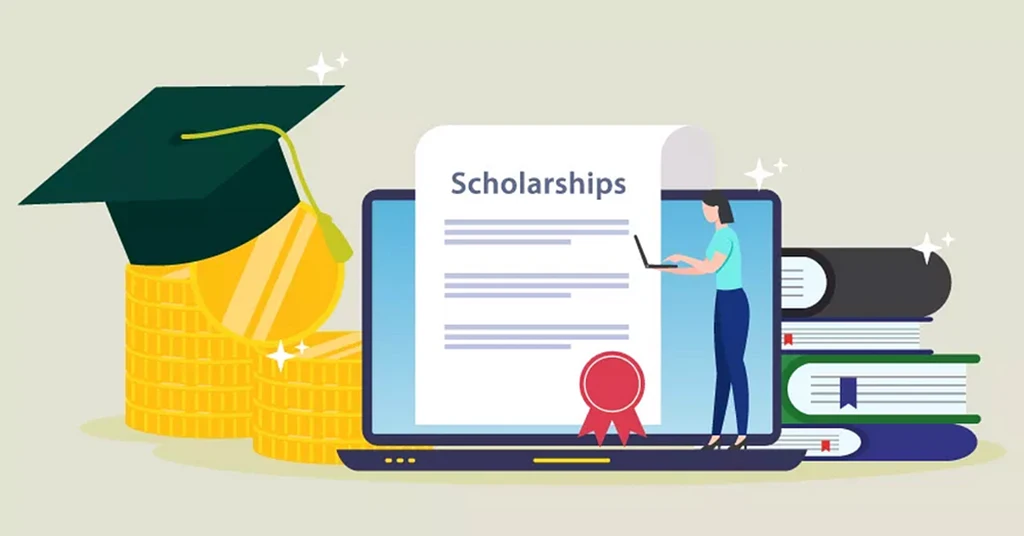
Read their award-winning essays on the prompt “What is your favorite tech invention of the last ten years?” below!

Carmen Palileo
Carmen Palileo of Johnson City, TN
After sunset, the open ocean steals its colors from the sun. It burns magenta, orange, and brilliant gold before extinguishing in infinite darkness, matching the depths below. Only then do plankton, fishes, squids, eels, jellyfish, and a plethora of other animals commute en masse to feed at the surface; when the sun rises, they return from whence they came. The ocean twilight zone is a vast, dimly-lit region of the ocean where diversity abounds. Long-jawed anglerfish, 50-meter-long siphonophores, and the like catch krill, copepods, or bioluminescent bristlemouth fish. Many gelatinous decomposers feed on the detritus that falls from the waters above; these organisms are highly elusive, relatively unknown, and easily disturbed.
Mesobot, a hybrid underwater vehicle, can dive up to one thousand meters below sea level to observe marine life where it is too deep to send human divers and too costly to send submarines. It has white-to-red LED lights, a stereo pair of cameras, and another for high-resolution images. Using epipolar geometry and image processing software, Mesobot autonomously tracks fragile microorganisms on their daily migrations, following from a respectful distance. Most propeller designs agitate the surrounding water, preventing scientists from observing in situ behavior. With this in mind, engineers fitted Mesobot with large, low-powered thrusters that generate minimal hydrodynamic disturbance. The result is a 250 kilogram, 1.5 meters tall, slow-moving vehicle that can hold its depth to the centimeter, enabling it to observe zooplankton closer than ever before.
As a Tennessean, my childhood interest in marine biology may seem out of place; however, I find this fascinating: for thousands of years, people have sailed the seven seas, dived beneath its waves, or launched submarines where a select few can fathom, but only recently have we been able to create research platforms to explore it at this level of depth and detail. Mesobot is a novel, investigative tool. The behaviors, lifecycles, and life histories of twilight zone species are up to speculation. Their ecological niches in local food webs are shrouded in mystery. Scientists know that these organisms transfer nutrients to the ocean floor, but they lack data to describe the twilight zone’s role in the global carbon cycle. Information never leaks on its own, and from an empirical perspective, it is impractical to leave such questions up in the air.
More than eighty percent of the world’s oceans remain unmapped and unobserved. With a looming climate crisis burdened by limited knowledge, there is a critical need to understand how society’s increasing demand for marine resources impacts seventy-one percent of the planet. The most-traded food commodity in the world is seafood. Livestock and aquaculture depend on fishmeal, and millions subsist on modest incomes from fisheries. Even so, illegal overfishing operations in the open ocean compromise food security and the well-being of workers at sea. Krill fishing, for example, could provoke the collapse of the Antarctic ecosystem, already weakened by rising global temperatures.
When I go to college, I want to study mechanical engineering with a focus on robotics. I want to realize robust platforms to collect data, so marine biologists may better understand twilight zone species and methods to protect them from overexploitation. The twilight zone and the deep sea are Earth’s final frontier, and one of the best ways for me to explore it is to build a vehicle to push the boundaries of what is possible.

Christina Marogi
Christina Marogi of Sterling Heights, MI
It is no doubt that we are in the middle of a technological revolution. Ever since I was younger, I have dreamed of a future in which we can turn on the lights effortlessly by clapping our hands or using our voices. I would have never imagined that my dream would become a reality a decade later. Due to this factor, one technological innovation that has become my favorite within the past ten years would be digital assistants such as Amazon’s Alexa or Apple’s Siri. These devices are not only convenient but have changed daily tasks at home and the workplace.
Digital assistants have changed the way people do their chores at home. For instance, instead of spending a back-breaking day vacuuming the house, you can ask Amazon’s Alexa to turn on a vacuuming robot such as Roomba. Also, if you are not in the mood to wash the dishes, you can ask Alexa or Google Assistant to turn on the dishwasher if it is also a smart device. Digital assistants can also serve as personal shoppers. You can ask the assistant to create a shopping list, add items to the cart at Target or Amazon, and even purchase those items. These assistants would also give out recommendations based on your shopping habits.
Digital assistants are also child-friendly. For instance, children can ask the assistant to play a game or turn on a movie. Another positive would be the ability of these devices to help children with their homework and speech. Digital assistants such as Amazon’s Alexa can encourage children to rephrase their sentences or pronounce a difficult word correctly. Not to mention, parents can monitor their children’s screen time using digital assistants.
When it comes to the workplace, a digital assistant can replace a human assistant or a secretary. For instance, like a human assistant, a voice assistant can also order lunch, schedule appointments, answer phone calls, and note important dates. Digital assistants could save the company money since employers don’t have to pay additional salaries. Not to mention, the digital assistant can record voice memos, create, and even send emails.
When I finish college, I plan to be a software engineer; I love the idea of using code to make programs that would simplify daily tasks. Another idea I love that comes with my career is being able to encourage more females into STEM. As a female studying Informational Technology (IT), I noticed that males usually outnumber females by 20-7 in the classroom. Not to mention, my female classmates drop out of these IT classes at a higher rate than my male classmates. This issue is not only occurring at my college but also in other higher institutions across the world. Schools and employers need to find ways to decrease the gender gap to give everyone confidence in STEM.
During my studies, I plan to join an organization dedicated to closing the gender gap in STEM. I also hope to create a tutoring program that helps female students struggling in STEM subjects. I also plan that the tutoring program would also let the students become the mentor. The goal of the tutoring program is to help female students become leaders by using the knowledge they learned in class and tutoring to help other girls. During my career in Software Engineering, I hope to create a website or an app for females interested in STEM. This website or app will contain information about each STEM profession, games, activities, as well as informational and motivational videos.


